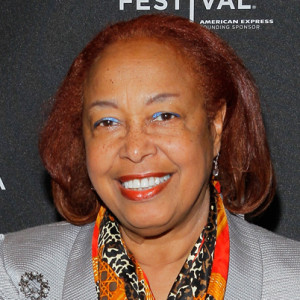Black History Month: Patricia Bath – The First African-American Doctor To Get A Medical Patent


Her parents encouraged Ms. Patricia to be keen on her education, and Ms. Patricia received her inspiration from Albert Schweizer who was doing remarkable work in medicine. Ms. Patricia Bath applied for and won the National Science Foundation Scholarship when she was still at the Charles Evans Hughes High School. Her wining of the scholarship led to her being a research project on cancer conducted by Yeshiva University and Harlem Hospital Center that took her interest in medicine even to greater heights. Her remarkable contribution to this particular research gave her, her first recognition when she won the “Merit Award” by the Mademoiselle Magazine.
Bath graduated from high school quite early, and she proceeded to the New York’s Hunter College where she graduated with a Bachelor of Arts in Chemistry in 1964. After which she moved to Washington D.C to go to Howard University College of Medicine where she got her doctoral degree in the year 1968. During her studies at Howard, she received the opportunity to be the president of the Student National Medical Association which led to her being awarded a fellowship by the National Institute of Mental Health and the National Institutes of Health.
Between the years 1968 to 1970, Bath got an internship with Harlem Hospital Center, where she became more aware of the eye care practices. It was at this time that Bath noticed that eye problems were uneven among the poor populations and the racial minorities; there was a higher incidence of blindness among the poor population majority of whom being within the African-American communities. This became a trigger for her interest in studying and understanding this phenomenon that seemed to plague mostly her poor patients with higher incidence on the African-American populations. Bath persuaded her professor at Columbia to come and do some operation at the Harlem Hospital Center, which lead to the health institution to start offering eye surgery free of charge.
Henceforth Bath lead a worldwide discipline dubbed “community ophthalmology”, which was a volunteer-based outreach geared towards bringing the essential eye care to the population that was underserved. Between the years 1970 to 1973 she served in the ophthalmology residency at the New York University. After her education, she worked as an assistant professor at the Charles R. Drew University of Medicines and Science and the Jules Stein Eye Institute at the UCLA, which contributed to her becoming the first woman to be at the faculty of the Eye Institute.
In the year 1978, she co-founded the American Institute for Prevention of Blindness, where she served as the president, and in 1983 she was promoted to the head of a residency in her field at the Charles R. Drew University, breaking another record by being the first woman to ever lead such a department. In 1993, Bath retired from the UCLA, but was elected as an honorary staff to the institution thereby making her the first woman to hold such a position. She continued serving as an Ophthalmology professor of Howard University’s School of Medicine and also a professor of Telemedicine and Ophthalmology at St. Georges University. She then became a co-founder of the King-Drew Medical Center for ophthalmology training.
Patricia Bath’s Inventions
Her long experience and academic success lead to Bath making some of the ground breaking discoveries in ophthalmology. She not only achieved recognition by being the first African American woman to receive a patent in the medical field, but her invention contributed greatly in the world of ophthalmology. The following are some of Bath’s greatest invention and patents:
- U.S. Patent No. 4744360: This was Bath’s first patent which made her the first African American woman to get a medical patent. Her invention was a new method of removing cataract lenses using laser devices. Her invention made the removal of cataract not only more accurate, but also it transformed the way eye surgery was to be carried out ever since.
- U.S. Patent No. 5919186: The Abstract: “A method and apparatus for removing cataracts in which a flexible line preferably 1mm or less in diameter is inserted through an incision into the anterior chamber until it end is adjacent the cataract. Coherent radiation, preferably at a frequency between 193 and 351 nm, is coupled to the cataract by an optical fiber in the line. An irrigation sleeve extending partially around the irrigation sleeve conduct irrigating liquid to and remove ablated material from the anterior chamber and form with the optical fiber the flexible line”.
Patricia Bath without a doubt achieved mammoth success in her field of ophthalmology and left behind a great invention that would forever serve the medical field better. Her invention not only addressed medical challenges but societal challenges since cataract affected the poor population more than their other counterparts. Without a doubt she is a role model especially to the young African-American girls who want to pursue a career in medicine.



